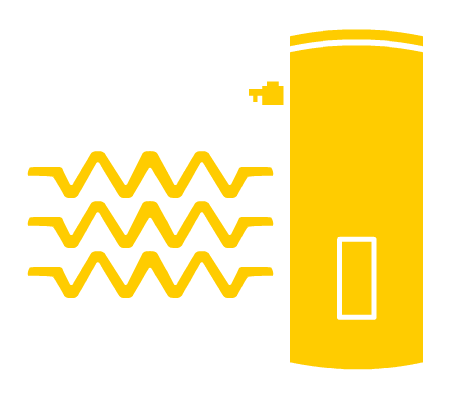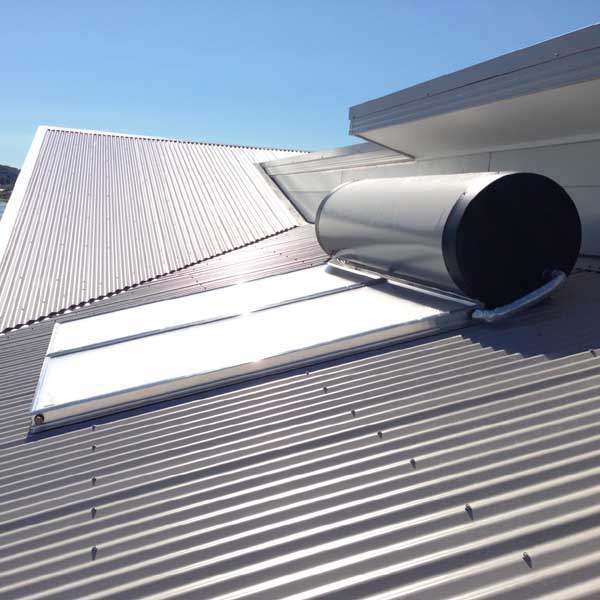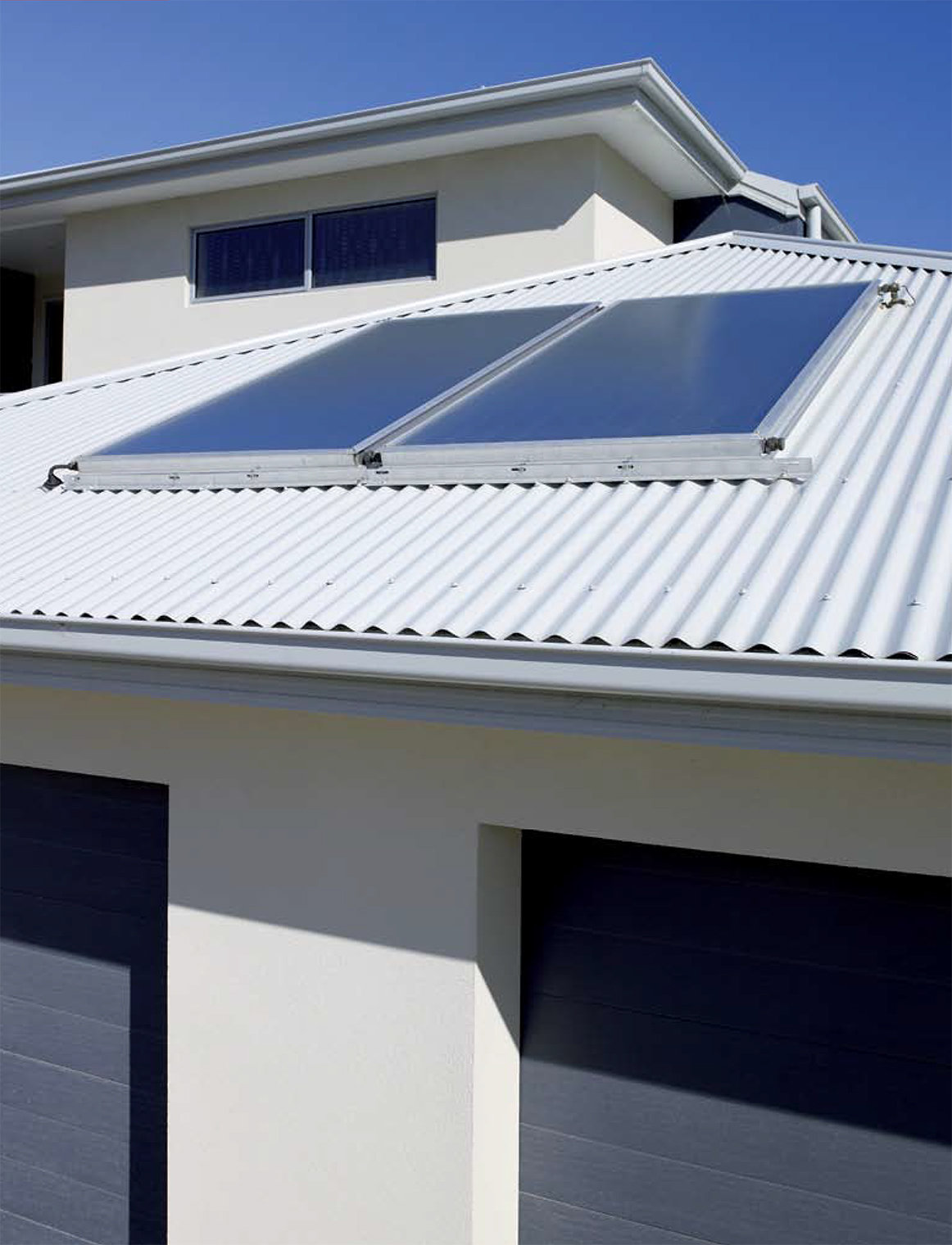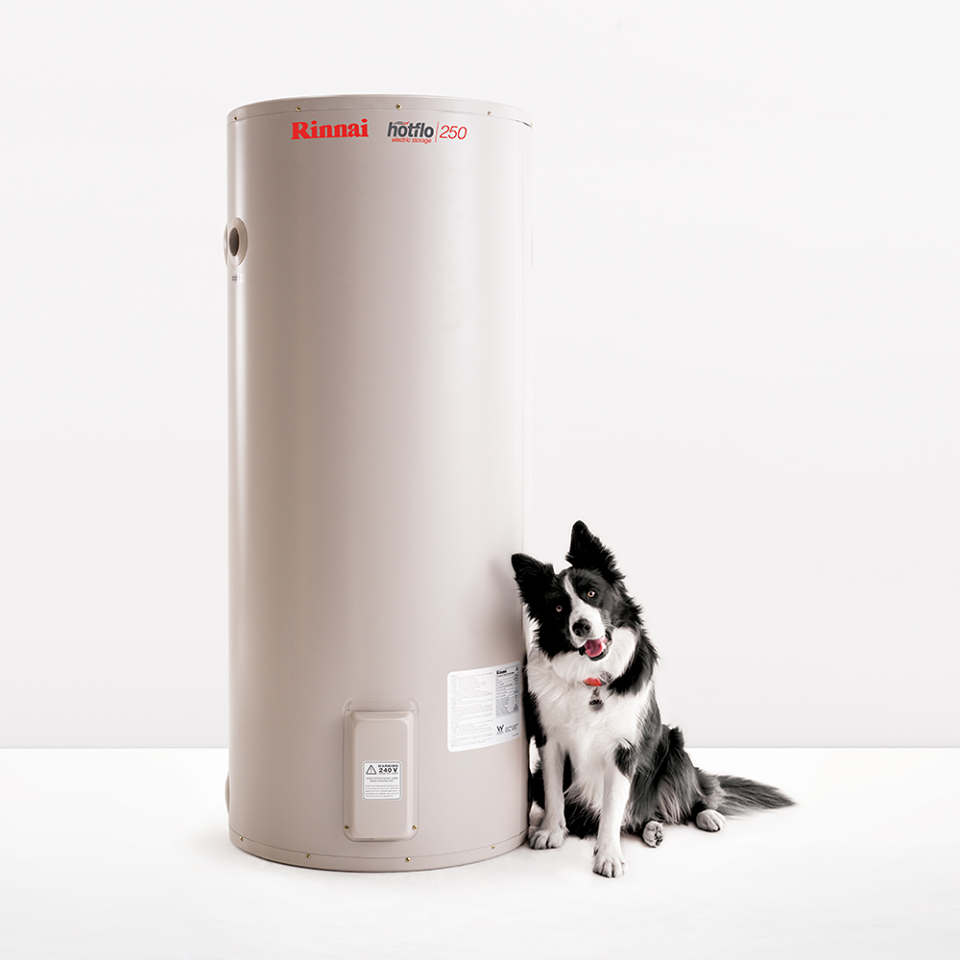
Hot Water

Hot Water

Water Heaters

Water Heaters

Hot Water
About
Rooftop Solar Hot Water Systems
With roof mounted systems, the tank is located directly above the collector panels. The thermosiphon principle is based on two naturally occurring phenomena – dark objects absorb heat and hot water rises.
Hot water is lighter than cold water, so it naturally flows up into the tank (or rather gets pushed up by the colder water sinking down).
Water flow happens through the mains pressure. As hot water is taken out (from the top), new cold water flows in and gets heated up in the panels.
Using these natural physical laws makes this system reliable and cheap to run. The disadvantages are that you may not like the look of the tank on the roof.
There are also some situations where the hot water would need to travel a long way before reaching your shower. In such cases, a lot of water is wasted and we recommend a split solar hot water system.
The tank and panels are covered by a manufacturer’s warranty of between 5 and 10 years depending on the brand. Installation and other parts are warranted for 12 months.
About
Split Solar Hot Water Systems
A split system has the collector panels on the roof and the storage tank is located at ground level usually where your current tank is.
A small electrical pump is necessary to circulate the water between the tank and the collectors and is regulated by a controller that measures the temperature difference between the water temperature in the collectors and the tank. However, the energy for the pump is offset in reduced heat losses, as the tank is more protected than a roof mounted system.
If the ideal location for the collector panels is a long distance from the location of the existing hot water tank, a split system will result in better water usage. The reason is that the hot water is stored closer to where it is used. That means you do not have to wait for the hot water to reach your shower.
An added advantage is the in-built frost support. If the temperature falls below 5 degrees C the pump automatically starts circulating the water. This sends warmer water back up to the panels so that the chances of it freezing are reduced.
The disadvantage of this system is it is slightly more expensive to buy and install. As with the Roof top systems, the tank and panels are covered by a manufacturer’s warranty of between 5 and 10 years depending on the brand. Installation and other parts are warranted for 12 months.
About
Electric Water Heaters
Conventional electric hot water systems remain an option where solar and gas hot water systems are not suitable. These systems consist of a storage cylinder that holds water at a pre-set temperature with the use of thermostatic control. They are available in a range of capacities from 50L to 315L to suit most needs and are best used with off-peak energy tariffs.
Tanks attract a warranty of between 5 and 10 years depending on the brand. Solar Ready Tanks are also available from Apricus should you wish to convert to a solar system at a later date.
About
Gas Water Heaters
Instantaneous or Continuous Flow Gas hot water systems heat the water when it is needed. They are efficient and compact allowing flexibility in installation options and are available in a range of flow rates to suit the size of your home.
The instantaneous gas hot water system works by heating water as it passes through the unit so that you only use energy when you turn on the hot water. The option of water controllers allows you to set your hot water to the perfect temperature.
The heat exchangers are warranted between 10 and 12 years and other parts for 3 – 5 years depending on brand and whether water controllers have been installed.
About
Rooftop Solar Hot Water Systems
With roof mounted systems, the tank is located directly above the collector panels. The thermosiphon principle is based on two naturally occurring phenomena – dark objects absorb heat and hot water rises.
Hot water is lighter than cold water, so it naturally flows up into the tank (or rather gets pushed up by the colder water sinking down).
Water flow happens through the mains pressure. As hot water is taken out (from the top), new cold water flows in and gets heated up in the panels.
Using these natural physical laws makes this system reliable and cheap to run. The disadvantages are that you may not like the look of the tank on the roof.
There are also some situations where the hot water would need to travel a long way before reaching your shower. In such cases, a lot of water is wasted and we recommend a split solar hot water system.
The tank and panels are covered by a manufacturer’s warranty of between 5 and 10 years depending on the brand. Installation and other parts are warranted for 12 months.








